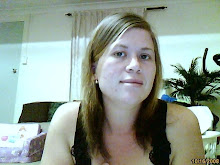As the Queensland Studies Authority (2007) states, "students live in a technological world where information and communication technologies (ICTs) are integral to everyday situations."
There is an endless list of technological competencies that are required for students to be part of 21st century connected society. These technologies provide a platform for creativity and innovation within a classroom setting. In the classroom there are opportunities for students to expand and enhance on their existing repertoire of technological skills and knowledge.
In the technological world, there are many tools for students to explore and experiment with. These information and communication technology tools can be integrated in a variety of ways across all key learning areas to support students' thinking, learning, collaboration and communication in the classroom.
Over the next few weeks, I will be exploring the use of a variety of ICTs. This week will cover blogs, read feeders and social bookmarking site 'Delicious'.
Blogs
Blogs are virtual diaries that are created by individuals and stored on the internet. They generally consist of text, images, videos and photos. They can be updated as often as the individual who created them deems necessary and contains any information that the writer wants to share with their viewing public.
Blogs, once set up, are a quick and easy way to communicate thoughts, ideas and information. They allow the user to share their world and opinions with others (even if they are on the other side of the world). Blogs give people an opportunity to publish their reflections of issues that are important to them.
Unless made private or for invited users only, blogs are open to public scrutiny. Blogs may also attract negative comments and unwanted spam.
Blogs have a wide range of uses in an educational setting. Students could use blogs as a way of communicating classroom events to their parents and other interested stakeholders or as a tool to express their opinions on topics they are discussing in their classroom. When students use blogs, they can also improve their writing, grammar, internet and keyboarding skills. By using blogs in the classroom as a way of learning, students are learning via the Engagement Theory, [(Relate, Create, Donate), have control of their learning, are engaged in real situations and also allows for complex thinking to occur] Oliver's Learning Design framework (by constructing their own meaning, ownership of their blogs, the learning is embedded in social experience and are encouraged to self-reflect) and also via the Active Learning framework (where students are using blogs to integrate with prior knowledge).
Read Feeders
Read feeders are an internet application that aggregates internet content such as news head lines, blogs and podcasts into a single location to allow easy viewing for the user. These readers reduce the time and effort required to keep up to date with regularly viewed websites.
Read feeders such as 'Google Reader' allow for regularly viewed websites to be stored in one site for easy viewing. When the reader is opened up, it will show any updates that have occurred on the subscribed websites.
If the user has subscribed to many websites, they may become overwhelmed with updates when they open the reader. However, if the user has made use of tags to group their sites when subscribing to websites, this problem may be reduced.
Just as with the use of Blogs in the classroom, read feeders are also another useful tool. If students have individually created blogs for their use in the classroom, they may choose to use a read feeder such as 'Google Reader' to track their classmates' blogs.
Delicious
Delicious is a social bookmarking service for storing, sharing, and discovering internet bookmarks. This service uses a system where users can tag each of their bookmarks to allow other Delicious users to find websites they have found useful.
Users can bookmark useful websites on Delicious and be able to access their 'favourite' sites from any computer in the world. Users are also able to research topics of interest through the use of tags given to websites by other users. In other words, it makes it possible to view websites that have been bookmarked by similar minded users.
However, unless the user is specific in their search criteria when using the search by tag function, they may not be able to find exactly what they are looking for.
Delicious, like the other applications mentioned in this post, allows for students to stay connected to their peers. If a student is researching a particular topic and finds a useful site, they could bookmark the site on Delicious, tagging it with a familiar name i.e. Class6A. Their peers could then search any sites that have been tagged as Class6A to also use the bookmarked sites for their research.
Reference:
Queensland Studies Authority (2007) Queensland Curriculum, Assessment and Reporting Framework: Information and Communicaton Technologies (Year 3). Accessed 13 July 2009 on the World Wide Web: http://www.qsa.qld.edu.au/downloads/learning/qcar_ccp_ict_yr3.pdf

Emma, I like how you have incorporated English skills in the Positive features of Blogs. Teachers can also use these Digital Literacies as resources for literacy skills such as the ability to know and understand and use hyperlinks and travel around the digital world.Jodi Sheargold
ReplyDeleteThanks Jodi,
ReplyDeleteThe use of blogs in the classroom is only limited to the imagination I guess. I'm looking forward to getting into a classroom and using a blog as part of my teaching!
Emma